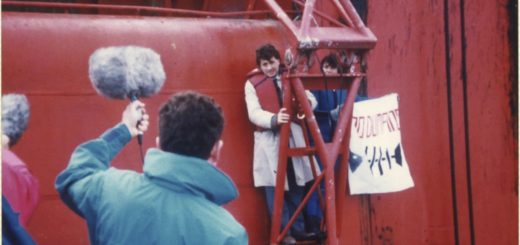Gerrymander? – Waitemata & Gulf under threat…from Auckland Council
Under the Local Electoral Act Auckland Council must undertake a representation review every 6 years to ensure there is a ‘fair’ balance between the population sizes of the wards and ‘effective representation’ of communities of interest. In Auckland the review only relates to council wards. After months of deliberation, (I was never consulted), a council working party chaired by Waitematā local board member Richard Northey found the only ward significantly out of alignment in terms of population was Waitematā & Gulf which the working party declared was ‘under represented’. That is the ratio of population to councillor within this ward is 33%, above the recommended ±10% difference with that of other wards. To lower the population it recommended significant parts of Grey Lynn and Grafton and all of Westmere, Parnell and Newmarket be chopped off (‘sliced and diced’ as one submitter put it) and transferred to the neighbouring Orakei and Albert-Eden wards. Bizarrely the Waitematā Local Board Area boundary would remain untouched. To me this just didn’t make sense so I undertook my own investigation.

The original Waitemata component of Waitemata & Gulf electorate (2010-2019) – extending from Hobson Bay to Meola inlet

The reduced post “representation review” Waitemata with high voting Parnell, Grafton and Newmarket sliced off.
My first question was: is there really ‘under representation’ in this ward? The Auckland Council ‘Super City’ is markedly different from all the other 77 councils across New Zealand. In terms of representation not only are there 20 councillors and a mayor – but because of the council’s unique ‘co-governance’ there are also 140 elected local board members. In Waitematā & Gulf while I am the only elected councillor, there are seven local board members for Waitematā, five for Great Barrier and five for Waiheke – 17 in all. So rather than just 20 councillors the council has 160 elected members, plus the mayor, plus 9 unelected Independent Maori Statutory Board members, plus 25 unelected CCO directors – all having an active role in the ‘functions, responsibilities and duties and executing the powers’ of the council.
My next stop was Electoral Services, the agency charged with running our local elections. In order to do so 130 different voting paper combinations must be produced to ensure voters receive the correct papers for their wards, Local Board Areas, District Health Boards, and Licensing Trusts. The proposed changes to the Waitematā & Gulf ward (but not the local board) boundaries and consequent changes to other ward boundaries across the isthmus, and dislocation from their Local Board areas which cannot be changed, will significantly increase the number and complexity of voting paper combinations and their cost. Election Services predict the resulting confusion is likely to generate significant complaints. I suspect it will also act as a turn-off for voter participation. Then I researched the legislation. The Local Electoral Act requires ‘fair representation’. Representation presupposes ‘electors’, a category referred to frequently throughout the Act, which also refers in one key instance, (the ±‘10% rule’), to ‘population.’ Normally this is not a problem. Across New Zealand about 70% of the population are ‘electors’ (the rest are mainly those too young to vote). Across Auckland the ratio is similar – 67%. But here in Waitematā, I discovered a remarkable difference – a ratio of only 51% of electors to population. This is due to the CBD having the highest concentration of non-elector residents in the country. Many are students and not surprisingly for the ‘CBD of New Zealand’ many are ex-pat workers on temporary work permits. Most I understand are actually eligible to vote – but in their hometowns: Hamilton, Wellington, Christchurch, or in the UK, Ireland, USA, China, India and so on. So Waitematā & Gulf has a population of 119,100 but only 69,700 electors. Orakei, where the council wants to shift the high voting areas of Parnell and Grafton, has a population of 91,500 with 65,339 electors – 72%. Actually the ratio of councillor to electors here is much lower than in Orakei.
Unfortunately the Council has focused rigidly on population but (typically) has overlooked the equally important legal requirement for ‘effective representation of communities of interest’. Not surprisingly the proposed changes are deeply unpopular. Of 145 written submissions from Waitematā residents, a remarkable 88% were opposed. I attended the hearing where community leaders from Grey Lynn, Ponsonby, Parnell, Grafton and the City Centre made compelling arguments to keep the ward and local board boundaries aligned. These, they argue define a historical and geographical community of interest which should not be divided. There is a remedy and it lies within the Local Electoral Act s19V 3 (a) (ii) which allows the council to retain the status quo if complying with the 10% rule would ‘divide communities of interest’. If Waitematā is a ‘community of interest’, as 88% submitters attest, and the Local Government Commission in 2010 deemed it to be – then the answer is obvious. The hearing panel only half-listened, sparing Grey Lynn and Westmere but shifting Parnell, Newmarket and the eastern side of Grafton to the Orakei Ward and the western side of Grafton to Albert Eden Ward but confusingly, at the same time, keeping all within the Waitemata Local Board area. The whole messy proposal will now to go to the Local Government Commission where it can be appealed. I will continue to fight to keep Waitematā & Gulf together. It’s one of the few good things to come out of the Super City.
This article features in the October 2018 issue of Ponsonby News



